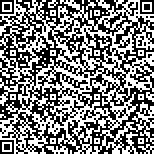下载中心
优秀审稿专家
优秀论文
相关链接
摘要

大量城市建筑使得高分影像中含有许多阴影区。这些阴影区在土地利用分类、植被绿度调查等遥感应用中会较大地影响结果精度,降低数据使用效率并增加研究成本。基于同一地物阴影区与临近非阴影区反射率相等这一辐射特征关系,通过建立辐射传输方程,发展了一种新的城市高分遥感影像阴影校正方法RERB (Reflectance Equality Relationship Based Method)。利用RERB对不同城市(北京和荷兰Enschede)不同高分多光谱影像(GeoEye-1和QuickBird)进行阴影校正,并对比分析其与被广泛采用的均值方差变换法MVT(Mean and Variance Transformation)的校正结果,通过定性和定量精度评价发现:(1)RERB能很好地将城市阴影区影像视觉特征(颜色、纹理、色调等)信息恢复到与非阴影区同一水平上;(2)RERB恢复后的阴影区具有丰富的细节信息且在视觉上与临近非阴影区具有良好的一致性;(3)RERB恢复后的城市柏油路面和水泥路面阴影区辐射信息具有较低的误差,可见光-近红外波段的平均误差分别为7%和9%。同时RERB能较好地恢复城市阴影区植被波谱特征信息。
The presence of urban shadows in optical satellite images with high spatial resolution limits the application of remote sensing technology in urban areas. These shadows can misrepresent image information, thereby generating potential errors in the derivation of surface parameters such as surface reflectance and reflectance-based indices. Thus, these shadows must be corrected and their radiance information restored to improve the effectiveness of remote sensing images. Many shadow correction methods have been developed according to the complex statistical relationships between shadowed and sunlit areas because the former maintains weak spectral radiance information. In addition, another physical relationship has often been detected between shadowed and sunlit areas, namely, the reflectance equality relationship (RER). This relationship can be regarded as the reflectance of the fact that similar-type features can be identical in both a shadowed area and its nearby sunlit area under the Lambertian surface condition. RER is generally independent of shadow detection processing; nonetheless, this relationship has not been fully considered in the development of shadow restoration algorithms. In this study, an RER-based (RERB) method were derived to correct the shadowed areas in optical multispectral satellite imageries of urban areas according to the principles of radiance transfer processes.This approach reduces the number of parameters; thus, it can lower the risk of errors propagated by the uncertainties of additional parameters. The new RERB method is tested via GeoEye-1 and QuickBird multispectral imageries with high spatial resolution in two different urban areas (Beijing and Enschede) that exhibit many urban building shadows. As per a comparison of this method with the widely used mean and variance transformation method, the former can restore the colors, texture, tone, and brightness of the shadowed areas in the image to a visually satisfactory level. Quantitative analysis results suggest that the RERB method can help restore the reflectance of shadowed asphalt roads accurately, with a mean error of 7%. This method can also be used to effectively restore the spectral shape information on shadowed features; this information is particularly important when the RERB method is applied to restore multispectral imagery for classifying an image based on spectral information and band indices. Another RERB shadow correction strategy that restores shadow surface reflectance instead of apparent radiance is discussed as well; nonetheless, this strategy requires further study because much auxiliary data is needed.

